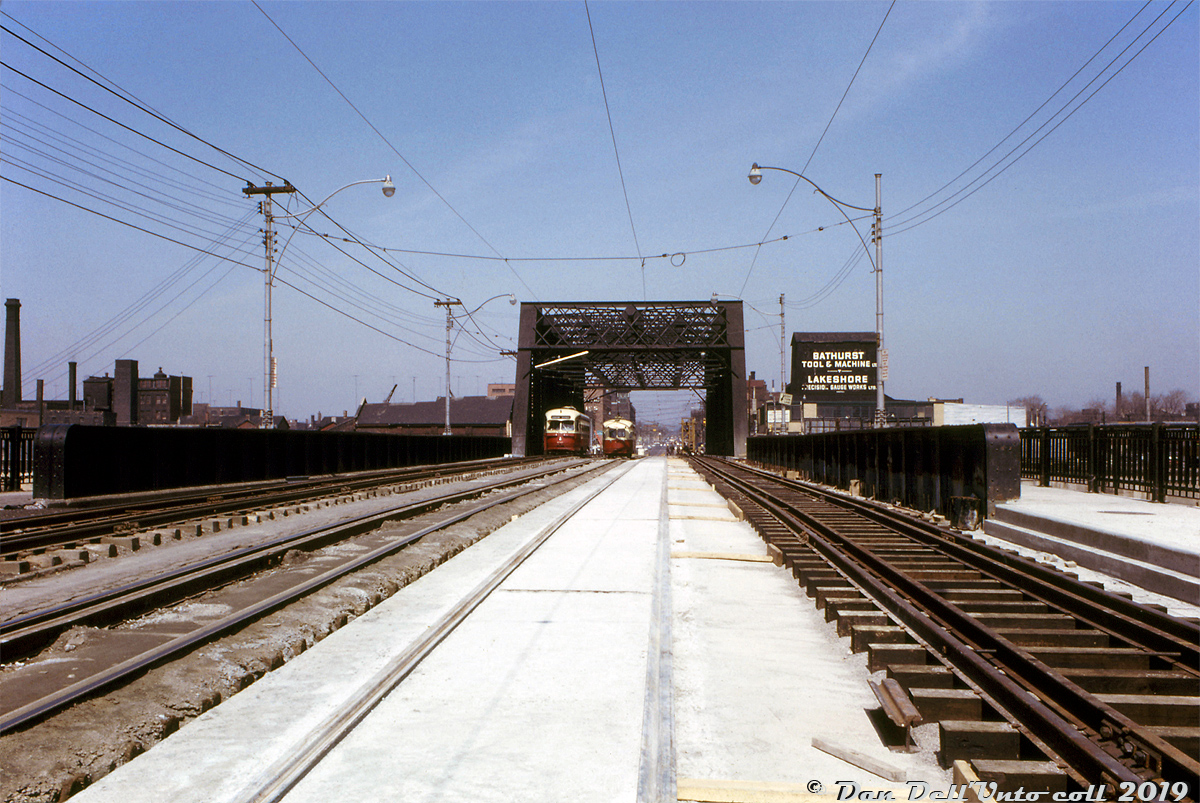|
Caption: The famed Bathurst Street bridge has long been a railfan favourite for shooting inbound and outbound rail activity at the west end of the Union Station Rail Corridor (formerly known as the Toronto Terminals Railway), but it has also long been home to streetcar service, notably the Bathurst streetcar (today route 511) and the old Fort streetcar.
The steel truss bridge section has an interesting history: it was originally built in 1903 for the Great Western Railway carrying their rail line over the Humber River, and became a road bridge when the structure was relocated to the south end of Bathurst Street in 1916, and kinked at an angle to the southwest over the railway corridor. In order to accommodate streetcar service further south, in 1930 the bridge was shifted to line up straight with Bathurst Street, and a concrete approach was built south of it leading to Fleet Street/Lake Shore Blvd.
Seen here looking north, Bathurst Street bridge is closed to automobile traffic while it undergoes track replacement work between late 1963 and into 1964. With the help of temporary tracks or "shoeflys", streetcars service continued over the bridge while construction work was carried out in stages. TTC A8-class PCC cars 4525 (southbound) and 4503 (northbound) pass over the main truss section, operating on the left-hand (southbound) side while finishing touches are put on the right-hand (northbound) traffic lanes, along with another temporary track installed on the far right.
Initially, while the right-hand (northbound) traffic lanes were both closed for construction work, streetcars operated over the left-hand lanes (as shown here) using a temporary track laid on top of the pavement for southbound streetcars and extra overhead catenary wire, while northbound cars used the regular southbound track embedded in the pavement. The alignment of the tracks at either end was diverted to use this setup. Once reconstruction work on the right (northbound) lanes was completed, another temporary track was laid in preparation for streetcars to start using this side of the bridge, so the left side (southbound) lanes could be closed and redone. From what I've been able to gather from photos, the entire closure took place between late 1963 (December?) and lasted until May or June 1964. Construction gates at either end prevented vehicular traffic from entering, but allowed streetcars to cross.
Another interesting industrial landmark is the old Bathurst Tool building, built in the 1890's and surviving into the early 2010's before being demolished for redevelopment. There was once an at-grade rail spur from the main corridor that came up from the west and crossed Bathurst Street to enter the building, but from what I've been able to gather it had been out of service and evidence of the crossing disappeared sometime in the early-mid 60's. There's a series of articles on the building's history here. The buildings off to the left belong to the National Casket Company, who also had their own rail siding.
Robert D. McMann photo, Dan Dell'Unto collection slide.
|


